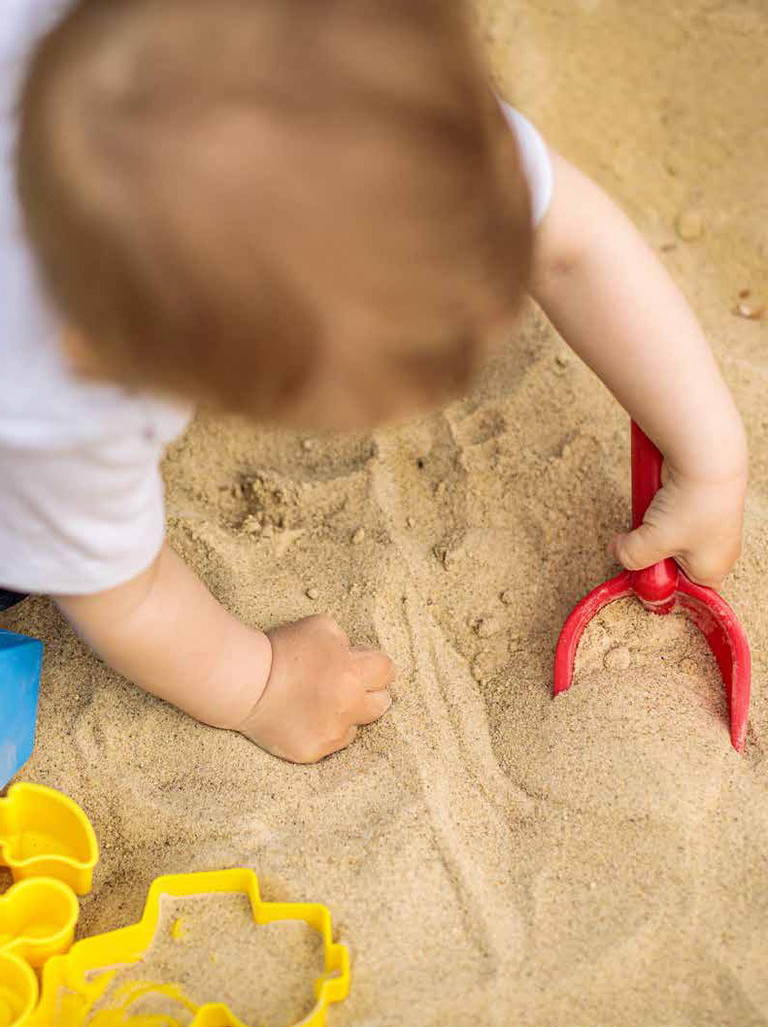ACTIVITY CORNER
Celebrating science

Melanie Pilcher, quality and standards manager at the Alliance, shares ideas for celebrating British Science Week on 10-19 March
Melanie is responsible for resources that support best practice in all matters relating to the EYFS.
While we may think of science as a challenging subject from school with complex formulas, calculations and technical language but scientific discovery is an integral part of early childhood development.
The National Aeronautics and Space Association (NASA) describes an engineer as someone who wants to know how and why things work. Similarly a scientist is described by the Science Council as: “someone who systematically gathers and uses research and evidence, to make hypotheses and test them, to gain and share understanding and knowledge”.
Characteristics of effective learning
Anyone who has observed a toddler expressing the characteristics of effective learning or engrossed in repeated actions and behaviours during what is described as ‘schematic play’ is observing science and engineering in action.
The key considerations for science activities mirror those that facilitate all areas of children’s learning and development, they are:
Process over product – the journey that a child takes as they experiment, problem solve and take risks, is more valuable than achieving a predetermined product. Children need to develop the confidence to investigate and make mistakes, this is where innovation comes from!
Children as active learners – when children have first-hand experiences, they can follow their own lines of enquiry and are engaged with the process. They are motivated by their own curiosity and inspired to find out more.
For early educators the emphasis is not on providing specific science activities where children are passive recipients of information, but recognising where science can be found in everyday experiences. This means that children will benefit fully from the educational programmes on offer and as active learners will constantly want to know more.
"Each mistake could be a teachable moment."
Loose parts play
This involves everyday objects that are usually ‘free and found’. For example, pots, pans, pebbles, boxes, cartons, sheets, tarpaulins, sticks and lots more besides. They can be any size but be aware of potential choke hazards for younger children.
In loose parts play, children create, experiment, problem solve, risk take and use their imaginations to repurpose loose parts into something that meets their interest at the time. There does not have to be an end product, but if there it is likely to be transient and determined by the child, or by a group of children who are working together to meet a shared goal.
Nature and outdoor learning
The outdoors offers endless possibilities and educates alongside the educator. Science is everywhere in nature and the resources available continually change. When playing and exploring outdoors, children are motivated to observe and to question everything they see, hear and touch. They will wonder why one leaf is so small and another so big, or how a tiny seed can grow into a huge tree.
Construction and deconstruction
Construction involving loose parts is open-ended, with many possibilities. Children can also flex their engineering skills by aiming to build something that requires some technical skill. For example, stacking blocks to make a tower, or using planks and blocks to create a bridge requires some thought about the materials that are suitable and the best method to use. There will be lots of trial and error before the end goal is achieved, but each mistake could be a teachable moment for the educator and offer a valuable learning experience for the early engineer.
Opportunities for deconstruction, or taking apart, items such as old radios or clocks, satisfy the enquiring mind that needs to know: what is inside, how does it work, how does it move? It is a natural urge for children to want to take apart a favourite toy, even though it may sometimes result in a reprimand for breaking something that may have been expensive. The truth is that many toys have limited appeal for the curious child. The next step, once a toy has outlived its original purpose, is to experiment with new ideas – deconstruction one option.
Sand and water play
There is good reason why sand and water are a staple at the early years provision. They satisfies the senses and offers children almost endless scope for experimentation. Adding items and changing them regularly will maintain children’s interest.
Children can explore capacity, shape, measurements and other mathematical concepts. They will experiment with the way sand and water moves as they let it slide through their fingers or pour from different containers at different heights. It gets messy and the temptation for the adult is to urge restraint. Sometimes it is better to stand back for a moment before intervening. The child who is pouring sand onto the floor is experimenting – not defying the rules. The child who is splashing water vigorously is fascinated by the sound, feel and movement – not setting out soak their clothes. It is all a matter of perception.